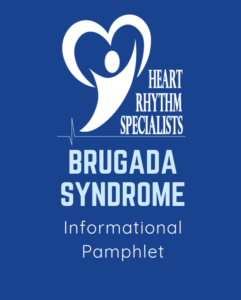What is Brugada Syndrome?
Brugada syndrome is a rare genetic disorder that affects the heart’s electrical system and can lead to a dangerous irregular heart rhythm called ventricular fibrillation (cardiac arrest). Many people with Brugada syndrome don’t show noticeable symptoms and are unaware that they have it until they have a serious cardiac event.
How is Brugada Syndrome Diagnosed?
Dr. Yoo will use a combination of a physical exam, medical history, and testing, such as an electrocardiogram (EKG/ECG) to look for what’s called a Brugada sign.
If you have this sign but don’t show symptoms, Dr. Yoo may also perform an electrophysiology (EP) study.
In addition, Dr. Yoo may recommend genetic screening using Invitae.
Risk Factors include:
- family history
- being male Asian heritage
- fever and respiratory illnesses which can trigger symptoms
Causes of Brugada Syndrome include:
- structural heart abnormality
- electrolyte imbalance
- certain medications
Symptoms of Brugada Syndrome
Most people with Brugada don’t experience or notice symptoms unless they have a cardiac event. Those who do experience symptoms may experience:
- fainting (syncope)
- irregular, rapid, or fluttering
heartbeat (palpitations) - sudden cardiac arrest (SCA)
- gasping or labored breathing, especially at night
- fast and chaotic heartbeat
- seizures
Treatments for Brugada Syndrome
Treatment depends on your level of risk; if you are at high risk, treatment may include an implantable cardioverter- defibrillator (ICD), drug therapy, and catheter ablation. However, you can also reduce risks of abnormal rhythms with the following lifestyle modifications:
- treating fever and respiratory illnesses aggressively
- avoiding certain heart medications and stimulants
- limiting alcohol
- avoiding high stress activities
Additional Resources
